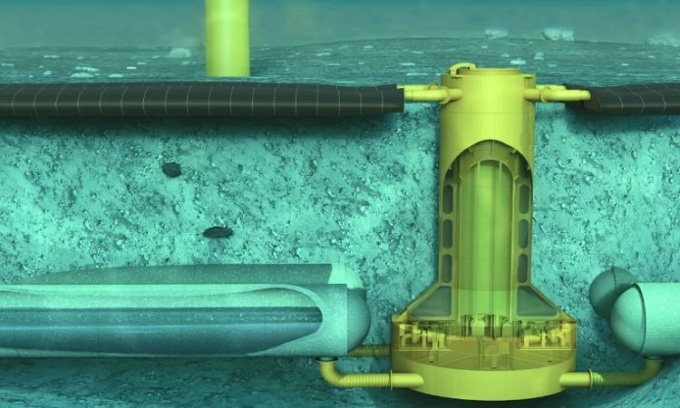The Ocean Grazer system, which includes a storage tank, pump, and turbine, can operate for 20 years, storing renewable energy and releasing it when needed to supply electricity.

The main components of the Ocean Battery system include a soft bubble (top left), a concrete tank (bottom left), and a machinery assembly (yellow in the middle) containing the pump and turbine. (Photo: Ocean Grazer)
Despite being highly beneficial, renewable energy sources still require storage systems to prepare for times without sunlight or during calm winds. The Ocean Battery is a new energy storage system that operates similarly to a hydroelectric dam located on the seabed.
Developed by the Dutch startup Ocean Grazer, the Ocean Battery is designed to be installed on the seabed near offshore renewable energy generators such as wind turbines, floating solar farms, tidal energy, and wave energy. The system consists of three components that operate based on principles similar to hydroelectric dams.
Beneath the seabed lies a concrete reservoir capable of holding 20 million liters of fresh water, stored at low pressure. A system of pumps and turbines connects this water reservoir to a soft bubble located on the seabed. Excess electricity from renewable energy sources can be used to pump water from the reservoir into the bubble. When electricity is needed, the pressure from the seawater above causes the bubble to release and push water back into the reservoir, spinning the turbine to generate electricity and supply it to the grid.
The research team at Ocean Grazer reports that the system’s efficiency reaches 70-80% and can operate in an unlimited cycle for over 20 years. The scale of the system is also relatively large. Each concrete reservoir has a capacity of 10 MWh, so adding more reservoirs can help increase total capacity. Engineers can also add more pumps and turbines to enhance electricity generation capacity.
The design of the Ocean Battery is quite unique, but it is not the only underwater battery system being developed. The German company Subhydro has proposed a similar idea of pumping seawater from a reservoir located on the seabed and then releasing it back to spin a turbine when electricity is needed. The Massachusetts Institute of Technology in the United States has also described a similar design using hollow concrete spheres.
















































